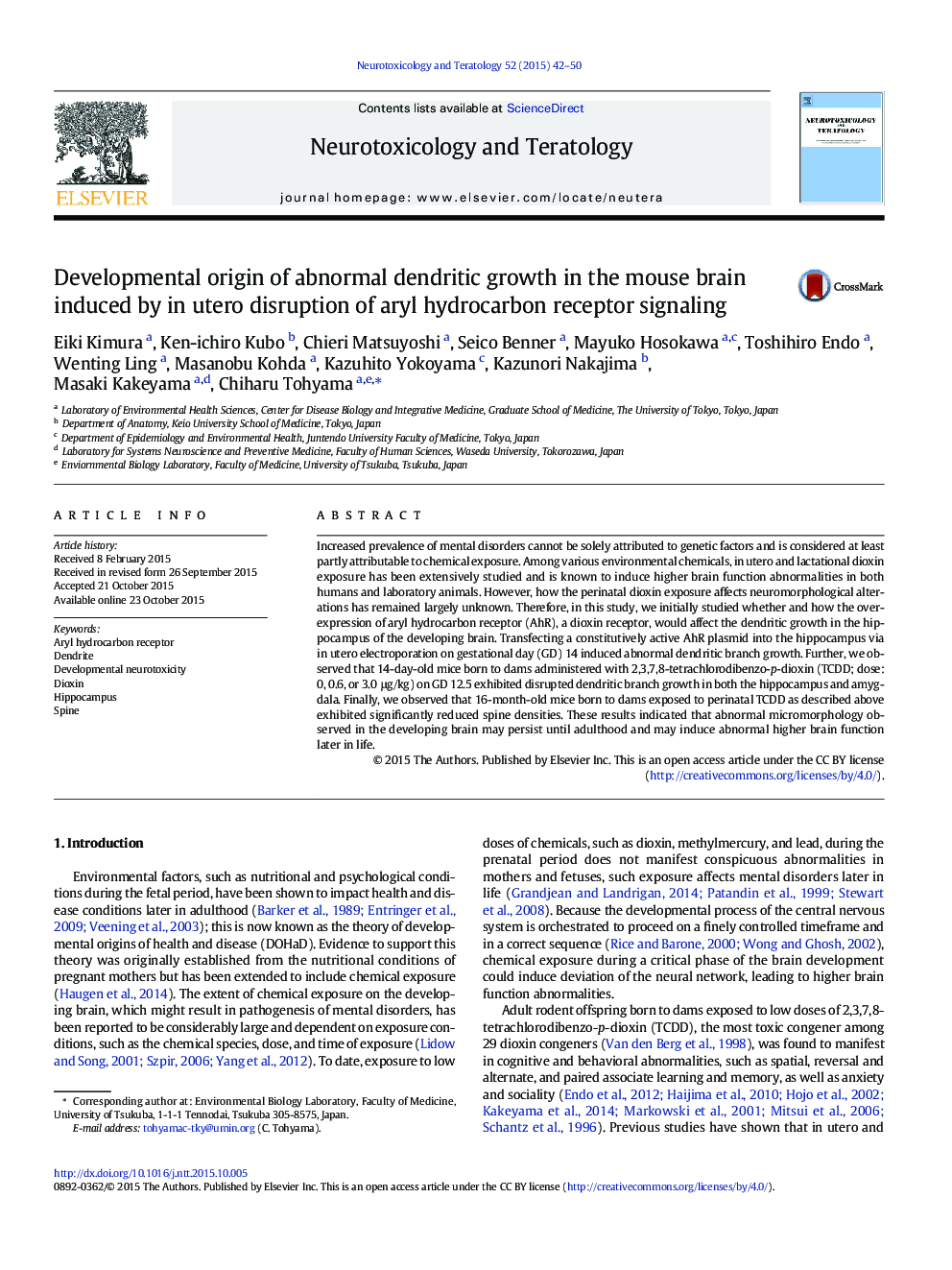| Article ID | Journal | Published Year | Pages | File Type |
|---|---|---|---|---|
| 5855554 | Neurotoxicology and Teratology | 2015 | 9 Pages |
•Hippocampal specific CA-AhR transfection induced abnormal dendritic growth of CA1 pyramidal neurons in the developing brain.•Perinatal exposure to low doses of TCDD disrupted dendritic growth in the hippocampus and amygdala in the developing brain.•Aged mice perinatally exposed to low doses of TCDD exhibited low hippocampal spine density.
Increased prevalence of mental disorders cannot be solely attributed to genetic factors and is considered at least partly attributable to chemical exposure. Among various environmental chemicals, in utero and lactational dioxin exposure has been extensively studied and is known to induce higher brain function abnormalities in both humans and laboratory animals. However, how the perinatal dioxin exposure affects neuromorphological alterations has remained largely unknown. Therefore, in this study, we initially studied whether and how the over-expression of aryl hydrocarbon receptor (AhR), a dioxin receptor, would affect the dendritic growth in the hippocampus of the developing brain. Transfecting a constitutively active AhR plasmid into the hippocampus via in utero electroporation on gestational day (GD) 14 induced abnormal dendritic branch growth. Further, we observed that 14-day-old mice born to dams administered with 2,3,7,8-tetrachlorodibenzo-p-dioxin (TCDD; dose: 0, 0.6, or 3.0 μg/kg) on GD 12.5 exhibited disrupted dendritic branch growth in both the hippocampus and amygdala. Finally, we observed that 16-month-old mice born to dams exposed to perinatal TCDD as described above exhibited significantly reduced spine densities. These results indicated that abnormal micromorphology observed in the developing brain may persist until adulthood and may induce abnormal higher brain function later in life.
